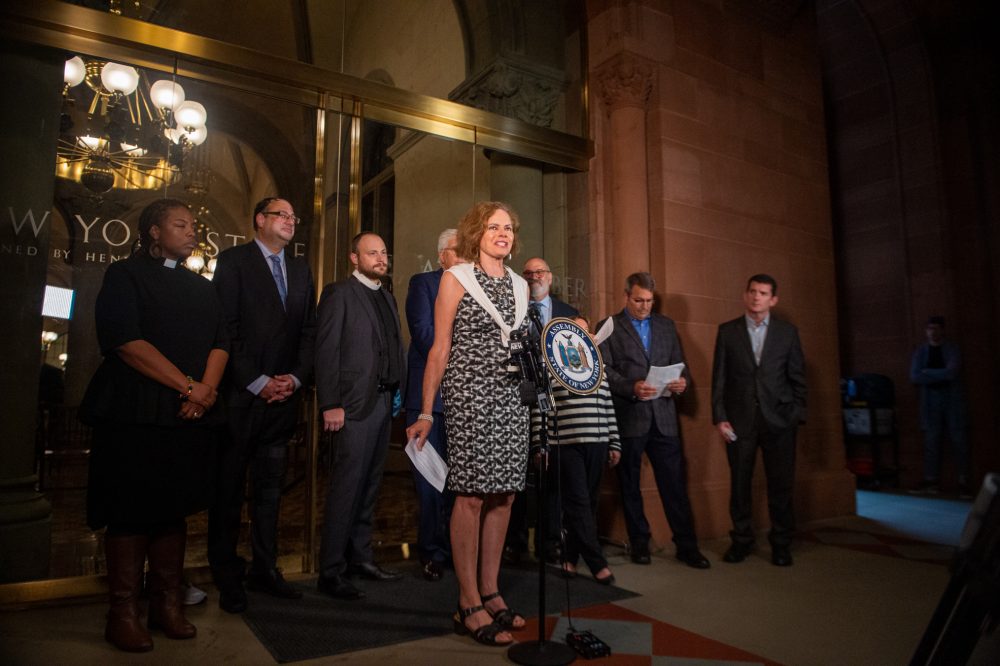
JONATHAN LI – FEBRUARY 14, 2022
EDITER – RAKSHA SEN
Part I: Trends in Tuition Costs
With US aggregate student debt amounting to $1.7 trillion, Congressional Democrats have mounted heavy pressure on President Biden to cancel up to $50,000 in federal student loan debt via an executive order. Despite the constant lobbying from progressive Democrats, Biden has remained steadfast to his initial proposal to cancel only up to $10,000 in student loans, significantly less than what progressives had hoped for. However, it is important to note that rising student debt is a reflection of a much deep-rooted issue: escalating costs to pursue a higher education. In this paper, we will examine trends in the most prominent barriers to higher education and legislative proposals that could potentially ease these barriers to attending university. 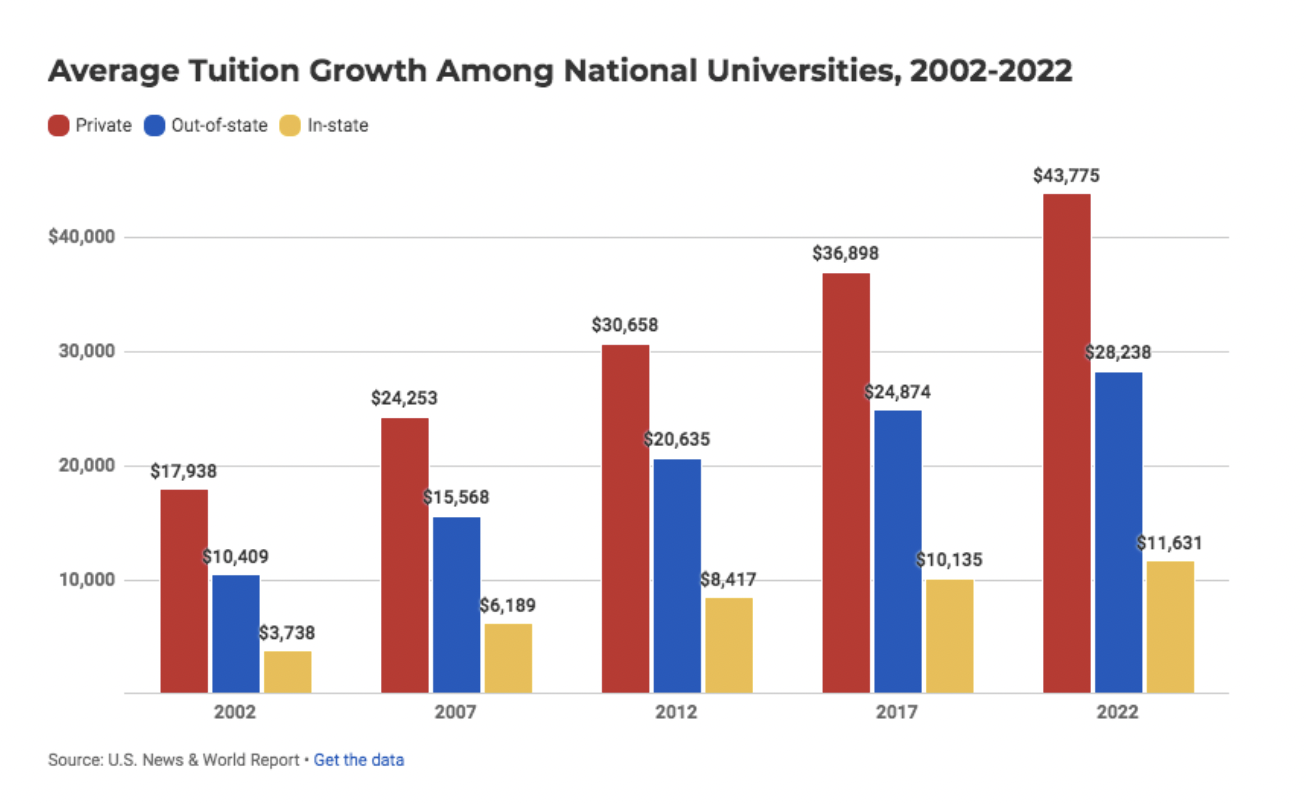
The graph above illustrates average tuition costs among national universities split into three categories: private, out-of-state, and in-state tuition costs. All three categories have universally seen a massive spike over the past two decades, with in-state tuition rising the most at 211%. Even when adjusting for inflation, the same story can be told. From 1985-2018, the price of attending a four-year institution increased by 497%, more than twice the rate of inflation. Rising tuition costs can be attributed to a large variety of factors such as increased expenditure on student recruitment, infrastructure, executive salaries, as well as declining financial support from state and local governments. The effects of this trend can be easily observed, with college enrollment rates declining by 1.67% annually since 2010 despite rising financial returns on a college degree over time. More than 42 million Americans hold student debt, and nearly a fifth of those borrowers are in default with millions more behind on loan payments. The implications of these trends could prove problematic for building a more equitable society, which we will further delve into in the next section.
Part II: The Significance of a Degree
To evaluate the financial gain of a degree, we can utilize the college wage premium: the ratio of the median hourly wage for those holding a bachelor’s relative to the median hourly wage of individuals with a high school diploma. The chart below illustrates the college wage premium as a function of time for both men and women.
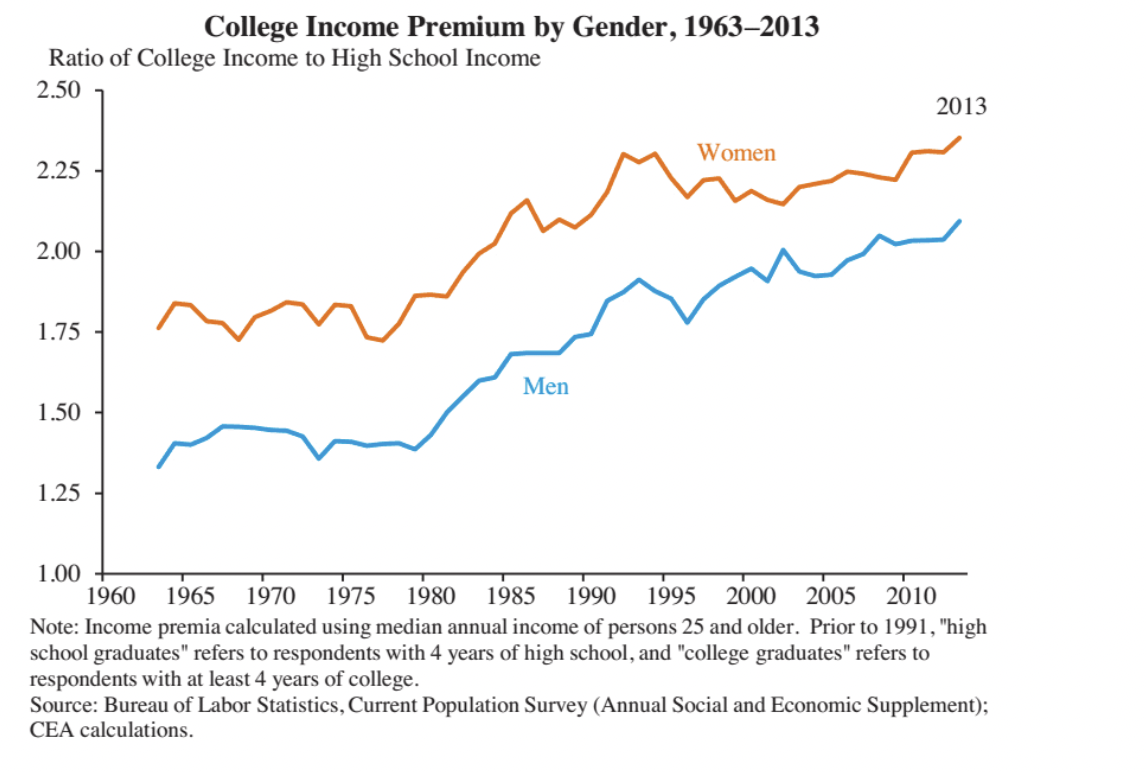
The chart conclusively illustrates that the financial returns of attending college have only increased over time, especially for women. While it is difficult to pinpoint the exact reasons behind this trend, economists posit a large variety of causes such as skill-biased technological change, a stagnant federal minimum wage, and declining worker unionization. As society increasingly emphasizes high-skilled work that requires a degree, income inequality only continues to skyrocket. In addition, higher education – particularly public universities – are highly correlated with middle-class mobility. Due to the increasing importance of a degree, it becomes crucial to highlight the barriers to higher education as well as solutions that could potentially break down some of these deterrents.
Part III: Quantifying Barriers to Education
To quantify how much obstacles – such as tuition, distance, and parents’ education status – affects the years of education people receive, we can utilize a random sample of high school seniors from 1100 high schools interviewed in 1980 and re-interviewed in 1986. The variables included in the dataset are shown below.
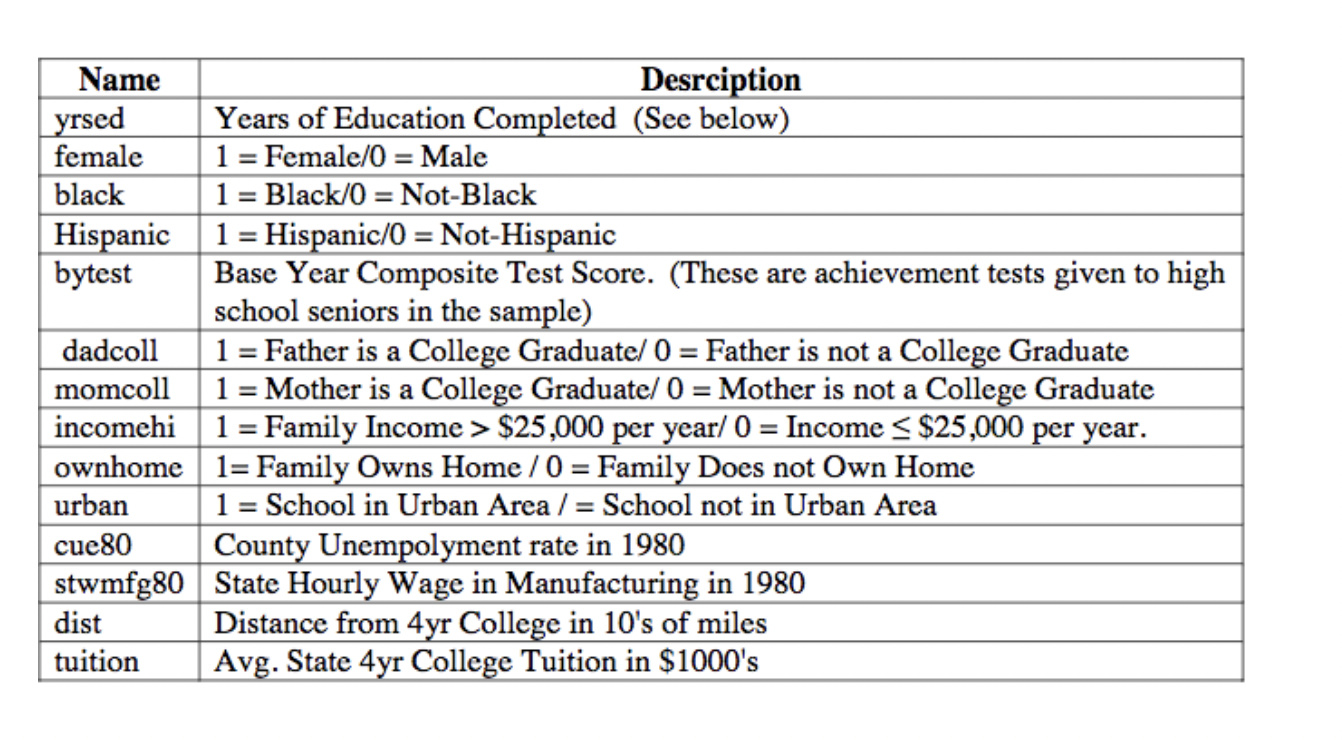
Our dependent variable is “yrsed”, which represents years of education completed. For instance, an individual who only completes high school would have a yrsed value of 12 (lowest possible value in dataset), while someone with a bachelor’s degree would have a yrsed value of 16. Every other variable in the dataset is a regressor (also known as independent variable), and we will look at the effects an incremental increase in each variable has on years of education completed (yrsed). Mathematically, we can model our experiment with the following equation below.
yrsed = β0 + β1 * female + β2 * black + β3 * Hispanic + β4 * bytest + β5 * dadcoll + β6 * momcoll + β7 * incomehi + β8 * ownhome + β9 * urban + β10 * cue80 + β11 * stwmfg80 + β12 * dist + β13 * tuition + ε
After conducting an OLS regression analysis, we get the following values for the beta coefficients.
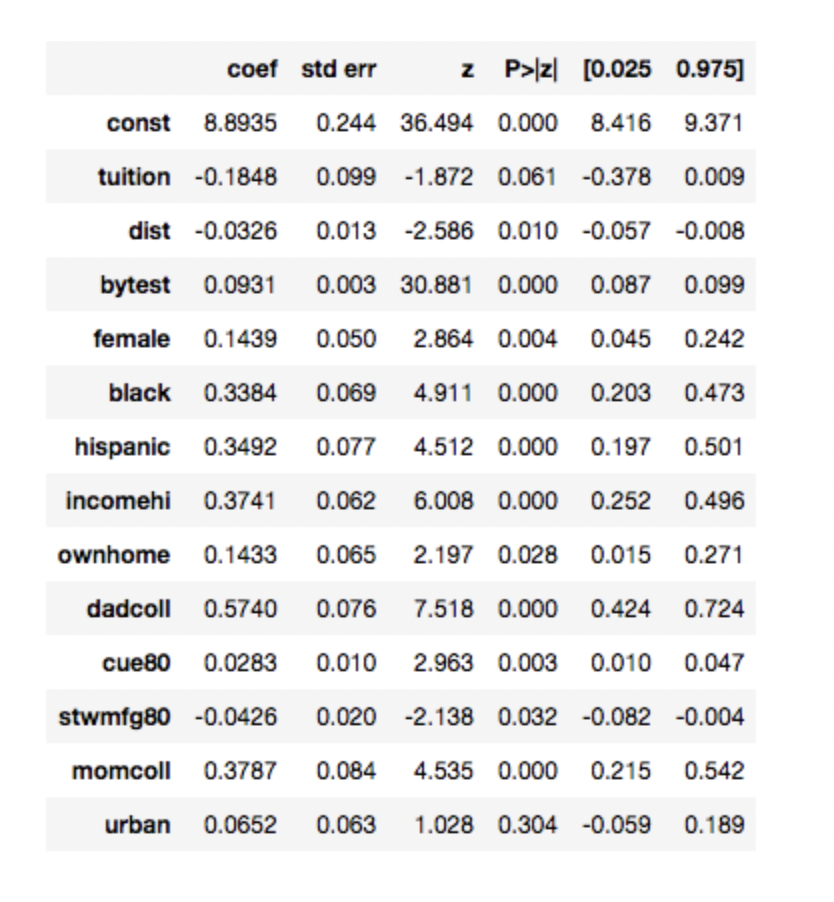
If we substitute in the coefficient values from the table into our mathematical model, we get the following equation.
yrsed = 8.89 + 0.14 * female + 0.34 * black + 0.35 * Hispanic + 0.09 * bytest + 0.57 * dadcoll + 0.38 * momcoll + 0.37 * incomehi + 0.14 * ownhome + 0.07 * urban + 0.03 * cue80 – 0.04 * stwmfg80 – 0.03 * dist – 0.18 * tuition + ε
As indicated by the table above, every single regressor has a statistically significant coefficient at the 10% level except for urban, which has a p-value of 0.304. Our variable of interest – tuition – has a coefficient value of -0.1848, meaning that a $1000 increase in average state college tuition decreases average yrsed by almost 0.2 years. Another notable regressor is dadcoll, which tests whether the student’s dad went to college. If the student’s father attended college, their expected yrsed increases by 0.574 years. It is also particularly interesting to observe that the student’s mother’s college status has significantly less of an impact relative to the father’s college status, another possible research question to explore in the future. Lastly, it is important to note that these coefficients are not meant to indicate perfect causality; there are likely other confounding variables that have not been properly accounted for. However, our results still align fairly well with past literature on this topic and give us some insight on the large variety of barriers that exist to attending university.
Part IV: Legislative Solutions
While no one piece of legislation can fully amend rising educational expenses, it is still crucial to examine legislation that could help spearhead progress on this issue. In this section, we will examine a few legislative proposals that could improve low-income students’ ability to pursue a degree without taking on more debt to finance their education.
One of the straightforward solutions is for governments to increase funding in pell grants – monetary grants for low-income students which varies according to household income. As tuition costs increase rapidly, the purchasing power of pell grants have declined over time. However, empirical evidence suggests it may be worth updating the maximum Pell Grant award amount. A study from the Upjohn Institute finds that students eligible for the largest grants are 13% more likely to graduate from college. Unfortunately, the current maximum Pell Grant amount for the 2021-22 school year is $6,495, less than one-third the cost of attending a typical four-year college. Hence, calls for the Federal government to double the maximum Pell grant amount have grown, with nearly 900 universities signaling their support for such policy.
Last October, California signed seven bills into law designed to enhance college affordability in California. One of these bills – Bill 469 – aims to improve the FAFSA application: the form students need to complete to receive federal financial aid. The FAFSA form has proven to be overly complicated and burdensome, leading to many students skipping the process because they believe they are ineligible, don’t understand how to apply, or worry about sharing personal information due to deportation fears. Consequently, California ranks 30th in the nation in FAFSA application rates. Bill 469 aims to streamline and simplify the aid application process through several measures, such as “giving local educational agencies direction and discretion on how to coordinate and assist families and students in the completion of financial aid applications”. Other states with poor FAFSA application rates should consider enacting similar measures to ease navigating the aid process in order to increase takeup rates among low-income students.
While Federal assistance for students should increase, much of the conversation surrounding college affordability needs to shift towards pressuring universities to slow down price increases. While tuition rates skyrocket, so have university endowments – money and financial assets donated to universities. In 2011, 76 public and private universities reported an endowment of at least 1 billion. In 2020, 65 private universities alone posted endowment assets of at least 1 billion, with Harvard posting an endowment of $41.9 billion and Yale following closely behind with an endowment value of $31.2 billion. Despite massive annual increases in their endowments from donors, universities only spend an average of 4% to 5% of their endowment each year. One way to discourage universities from spiking tuition is by placing a special tax on endowment incomes in years where their endowments are growing but those schools still raise their tuition by greater than the inflation rate. Holistically, the price to attend college has increased 8 times faster than US wages, which is unacceptable given the rising wealth of universities. Similar to how society holds price-gouging corporations accountable, it is time to begin holding universities owning multi-billion dollar endowments accountable.
Part V: Conclusion
As tuition rates grow unchecked, it is time to take a deeper dive on the impact this trend has on low-income students – who bear the brunt of tuition spikes. In order to adapt to a digitalizing economy, it is necessary for a greater proportion of the population to pursue higher education. Hence, Federal, State, and Local governments must work together to coordinate legislative measures that not only make it easier for students to afford college, but also place pressure on universities to be reasonable with their tuition rates. By improving affordability, this gives middle and lower-income students a chance to build a better future for themselves, improving the equity of our society in the long run.
Featured Image Source: billmoyers
Disclaimer: The views published in this journal are those of the individual authors or speakers and do not necessarily reflect the position or policy of Berkeley Economic Review staff, the Undergraduate Economics Association, the UC Berkeley Economics Department and faculty, or the University of California, Berkeley in general.

